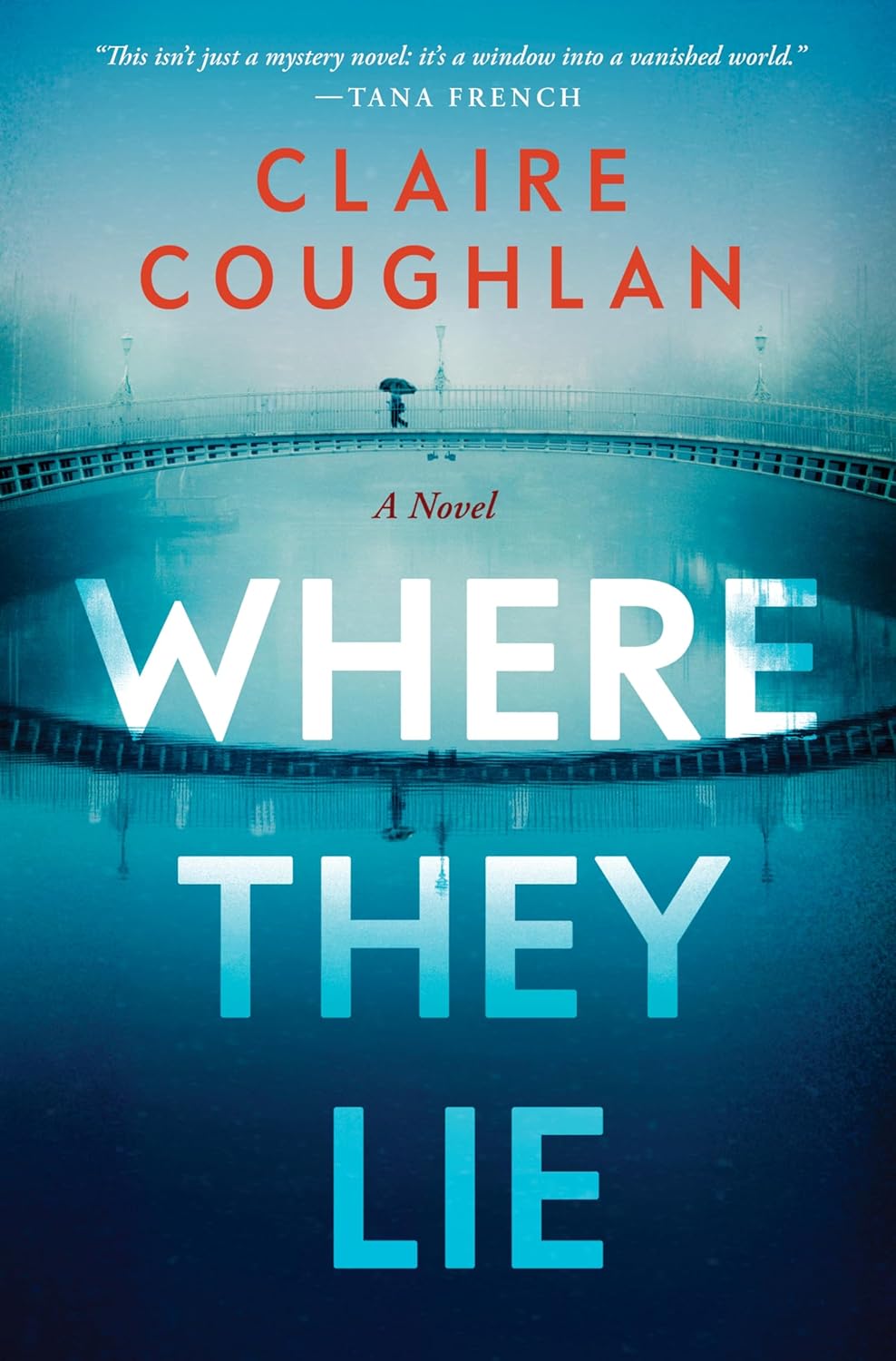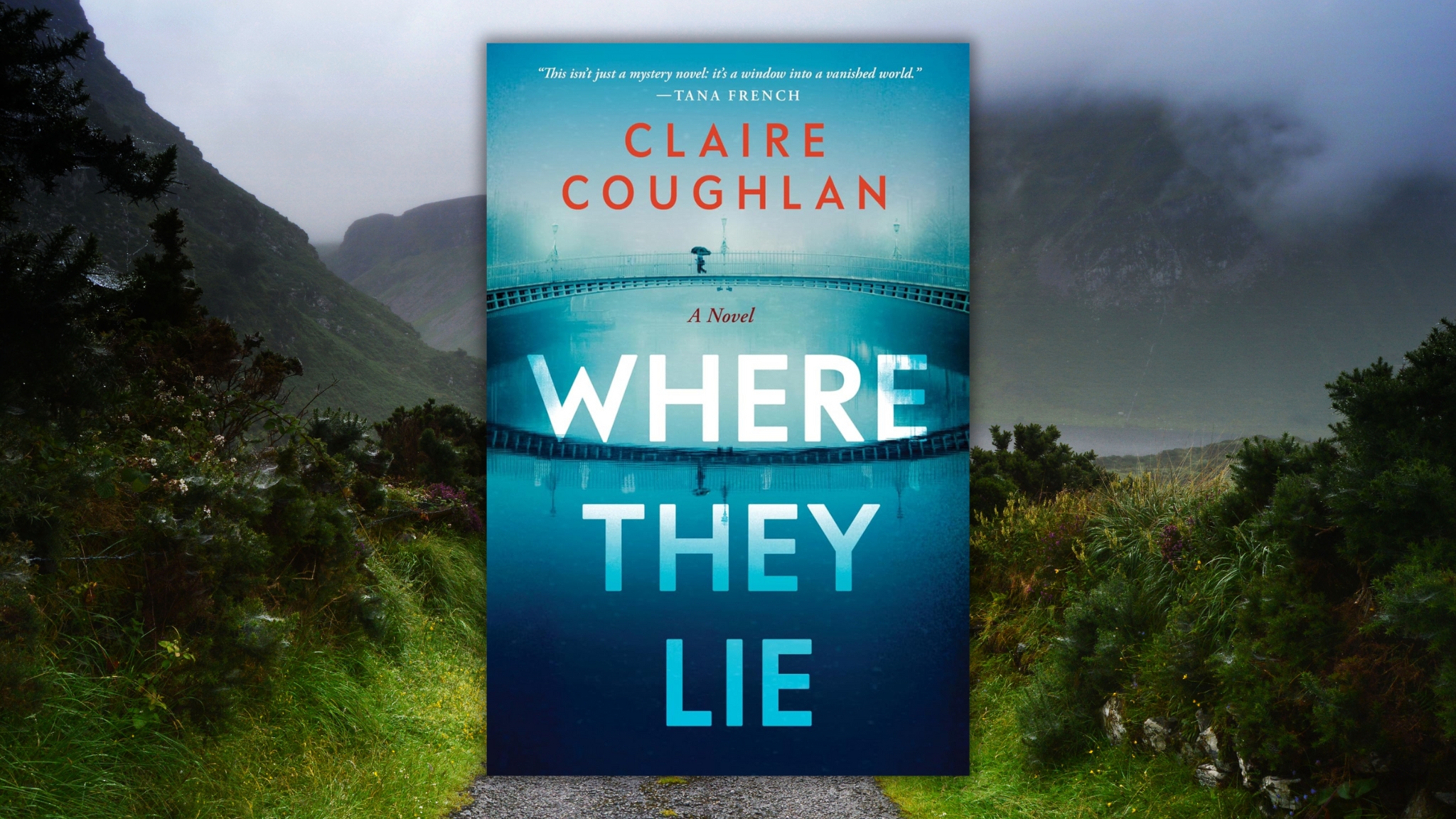Where They Lie by Claire Coughlan
What's It About?
A literary thriller set in 1960s Dublin about an ambitious young female journalist whose investigation of a long-missing actress will take her through misty streets and the tangled underworld — and force her to confront the long-buried secrets of her own past.Each month yields a fresh bumper crop of thrillers. They may be labeled “atmospheric, literary, spine-tingling, noir” or whatever the currently favored catch-phrase is for publicists to extol their clients’ virtues making it difficult for readers and reviewers not to become cynical about these sometimes over-hyped new releases.
However, there are exceptions that really do keep one up at night, rapidly turning pages, gulping down paragraphs until the final sentence has been read. Debut novelist Claire Coughlan has achieved this feat with Where They Lie. You’ll want to read this exceptional work of fiction, carefully crafted without a word out of place.
Miniskirt-clad modern protagonist Nicoletta Sarto is an ambitious 25-year-old reporter for the fictional newspaper Irish Sentinel hoping for a story big enough to land her the job opening as the women’s page editor. Her tagline is “the story she was born to tell.” Events will bear this out.
Rookie Journalist Looking for a Story
Where They Lie begins in a nearly deserted newsroom in Dublin, Ireland on December 23, 1968. There are few stories of any substance during the festive holiday season. The typewriters are temporarily silent; one of the copy boys is sneaking a nap before the presses begin rolling with the morning edition. The air is redolent of stale cigarette smoke and the bitter smell of day old coffee.
Nicoletta, the most junior reporter, is “working” the night shift seated at a desk hoping the telephone will ring. She fills time by making hourly phone calls to Dublin’s five Garda (police) stations, asking if there’s anything to report and hoping her hesitancy and polite manners don’t betray her inexperience, knowing her queries don’t exude the brash confidence of the three male veteran reporters.
A chance remark while making conversation with Editor Tim Duffy sets the stage for Nicoletta’s launch into investigative journalism. “Is it always this quiet?” she asked. He responded by telling her the last major Christmas story was back in 1956 when disgraced midwife turned illegal abortionist Gloria Fitzgerald was sentenced to hang after the death of a mother of six. The sentence was later commuted to life in a mental asylum due to insanity.
Case That Sets Her Career Into Motion
After the newsmen head off to the pub, the phone rings with a surprising news item from Inspector David Morris, Pearse Street Garda Station, and her career begins in earnest.
The bones of Julia Bridges, a popular actress who disappeared in 1943 have been found buried in the garden of wealthy and respected upscale jeweler and businessman Charles Creighton. The last time the mink-clad beauty had been seen, she was staggering into Gloria Fitzgerald’s house. Twenty-five years on, this cold case begins to sizzle.
Morning dawns with Nicoletta, alert and armed with notebook and pens, already present on the Creighton estate to observe several members of the Garda continue their search for additional bones. When they find the corpse of a tiny baby, she begins a series of probing interviews that will rock Dublin with a tangled web of secrets of illegal abortion clinics, private baby adoptions and falsified birth records going back nearly three decades.
The eager to retire Garda Superintendent hastily declares the two bodies related and the case closed. Obvious to all, it’s a lazy decision and spurs this cub reporter to delve deeper with the assistance of two seasoned reporters, her married boyfriend Barney and her best pal Dermot, a brilliant man and closet homosexual, and Garda Connor whom she met as a teenager under much different circumstances. Stirring cold embers also brings up carefully concealed secrets about her family and her own past.
Set in Vibrant Time in Irish History
Ireland in the 1960s already smolders with changes and social upheaval that will propel it from lingering 19th-century mindsets into modern society.
The country is sharply divided, embroiled in the euphemistic “The Troubles” decades of conflict that began after what was supposed to be a peaceful civil rights march in Londonderry, Northern Ireland on October 5, 1963, which rapidly devolved into deadly, violent riots. “Youthquake!” fashions exemplified by London’s Carnaby Street designers such as Mary Quant offered affordable clothing such as A-line shift dresses and miniskirts in bold colors as worn by Nicoletta Sarto
The styles were as exuberant as the creative and innovative new music. Traditional Irish folk music was displaced by the British Invasion — although Belfast’s own Van Morrison simultaneously made a name for himself fronting the group Them. The Beatles were a favorite of our heroine who likely received a copy of their newest release, The White Album, as a Christmas gift along with The Rolling Stones Beggar’s Banquet. Vidal Sassoon led the hair styling revolution with asymmetrical, easy-care cuts dominating the look for many years.
Difficult Times for Irish Women
More young women were attending universities and choosing careers over early marriages. However, Ireland was reluctant to permit too many freedoms to women. They did get the right to vote in 1918 but the paternalistic Irish state saw few women elected to any government offices including town councils.
The sale of contraceptives was officially banned until 1986, but beginning in the mid-1960s, “the pill” was marketed in Ireland to regulate menstrual cycles and frequently prescribed by sympathetic physicians for women who complained of heavy periods or irregular cycles. Abortion was illegal in Ireland until 2018; first prohibited in Ireland through what was called the Offenses against the Person Act of 1861. But those with ready cash and ablility to keep a secret could fairly easily find someone willing to oblige at home or abroad.
Laws which criminalized sexual relations between people of the same sex existed until 1993. Divorce was constitutionally illegal until February 1997. Unwed motherhood remained highly stigmatized, applying shame to both mother and illegitimate child. Conservative families could and would still consign their fallen daughters to one of the many Magdalene Laundries throughout Ireland.
These draconian workhouses where unwed mothers or girls deemed promiscuous could be incarcerated for years — up to life — were run primarily by Catholic religious orders with the support of the government. The Protestant-operated Dublin Magdalen Asylum, the first to open in 1765, did not close until 1994 and one of Dublin’s Catholic run institutions survived until 1996.
Highly Satisfying, Densely Atmospheric Thriller
Claire Coughlan’s 18-year career as a journalist has served her well in answering the basic who, what, where, when and why dictates of a thorough reporter in Where They Lie, a highly satisfying densely atmospheric literary thriller.
She gets the details right as she immerses the reader in WWII-era Dublin and focuses on the changing roles of working women in late 1968. It’s a surefire winner for readers and book clubs alike.
 About Claire Coughlan:
About Claire Coughlan:
Claire Coughlan worked as a journalist for many years, for newspapers and magazines in Ireland. She completed an MFA in Creative Writing at University College Dublin in 2014 and subsequently received mentoring from bestselling crime novelists Tammy Cohen and Andrea Mara, through the WoMentoring scheme, and Words Ireland/Kildare County Council, respectively. She lives in County Kildare with her husband and daughter.





